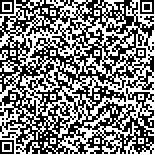下载中心
优秀审稿专家
优秀论文
相关链接
摘要

季节性冻结与消融的湖冰是气候变化的重要指示器。本文以兴凯湖为例,基于1979年—2019年的被动微波遥感数据获取了兴凯湖的冻融日期,用2000年—2019年的中等分辨率成像光谱仪MODIS(Moderate-resolution Imaging Spectroradiometer)数据进行了验证,并用气候数据分析了湖冰物候变化的原因。结果表明被动微波与MODIS遥感数据在湖冰物候提取方面具有较好的一致性,也即MODIS的验证结果表明用低频被动微波亮度温度数据获取湖冰物候的方法是可行的,结果也是可靠的。平均而言,兴凯湖湖冰每年11-13左右开始冻结,11-23左右完全冻结,湖冰冻结持续时间9.80 d;次年04-23左右湖冰开始消融,04-30左右湖冰完全消融,消融持续时间8.03 d;湖冰完全封冻时间150.50 d,湖冰覆盖时间168.03 d。过去41 a,兴凯湖开始冻结日期没有明显变化,完全冻结日期平均推后了0.19 d/a,开始消融日期和完全消融日期分别提前了0.16 d/a和0.13 d/a,湖泊完全封冻时间和湖冰覆盖时间分别缩短了12.71 d和2.87 d。湖冰冻结日期推后与风速增大密切相关,消融日期提前和湖冰持续时间缩短与气温升高显著相关。
Seasonal freeze—thaw of lake ice is an important indicator of climate change. As a boundary lake between China and Russia, Khanka Lake has annual ice cover due to its low air temperature. Changes in ice phenology greatly affect the physical, chemical, and biological lake processes. Therefore, this study aims to obtain the ice phenology variations of Khanka Lake and analyze its influencing factors from 1979 to 2019.An algorithm based on moving t test method is applied to determine the daily status of passive microwave calibrated enhanced resolution passive microwave (CETB) pixels, and then the ice phenology dates can be obtained by the thresholds of 5% and 95% of all the pixels. Subsequently, ice phenology results extracted from moderate-resolution imaging spectroradiometer (MODIS) daily snow product are used to compare with the results from passive microwave data. In addition, the meteorological data from Jixi station are used to analyze the reason for ice phenology variations of Khanka Lake.The results show that the passive microwave and MODIS remote sensing data have good consistency in the extraction of lake ice phenology. On the average, lake ice begins to freeze on November 13 and completely freezes on November 23 every year, and the freezing duration of lake ice is 9.80 days. On April 23 of the following year, the lake ice begins to melt, and on April 30, the lake ice completely melted, lasting for 8.03 days. The complete freezing duration of lake ice is 150.50 days, and the ice cover duration is 168.03 days. In more than 41 years, the freeze-up start date has no evident change, but the freeze-up end date has been pushed back at 0.19 day/year. In addition, the break-up start date and break-up end date have advanced at 0.16 day/year and 0.13 day/year, respectively. The complete freezing duration and ice cover duration have shortened by 12.71 days and 2.87 days, respectively. The delay of freeze-up dates is closely correlated with wind speed up, whereas the advancement of break-up dates and shortening of the complete freezing duration and ice cover duration are significantly correlated with the increasing air temperature.The consistency between ice phenology results from CETB dataset and MODIS daily snow product indicates that the extracting lake ice phenology from passive microwave brightness temperature with low frequency is feasible, and the results are reliable. Khanka Lake has experienced subsequent freeze-up end date and earlier break-up dates from 1979 to 2019, thereby shortening the complete freezing duration and ice cover duration. The increasing wind speed may be the main reason for the subsequent freeze-up dates, while the variations in break-up dates and ice cover durations can be explained by the increasing air temperature.

